*Full Vietnam photo gallery below*
When we first planned our itinerary, we were guided by both a long list of places we wanted to see as well as the logistics of connecting flights around the world. As the trip plan was fine tuned, I thought what we had ultimately chosen was an itinerary diverse enough to kind of keep us on our toes and prevent us from getting settled in too much to one region and culture. I saw it as “sustained culture shock.” Looking back on the limited traveling we did before this trip, it’s the part we remember the most. The stirrings of panic when you get a little lost, the elaborate production that even mundane errands can become, language barriers that segregate your conversation from all of those around you. An isolation that can have you with a sense of being alone in a crowd one moment and a subject of interest to curious strangers the next. Diving headlong into life in a foreign country can turn you upside down and rattle your sense of how things should operate. But really, you can get used to very different ways of doing things in a remarkably short period of time. We thought that the regional and cultural jumps that our early stops represented would present such stark contrasts that each of them might almost stand in isolation. What we didn’t expect was that we would be seeing hints and fragments of those early stops in each of the subsequent ones. The one that has been the most surprising is India.
The cultural influence of India in southeast asia is visible everywhere, from historic monuments to aspects of modern life. Hindu iconography on ancient temples and monuments are visible in Thailand and Cambodia. Royal and formal regalia share common elements in India, Thailand, and Cambodia. The curries and rice based dishes of those three countries also share many similarities. Practices in daily life like removing of shoes before going indoors or greeting with hands together in front of your chest are shared. There are water festivals in all three countries. I could go on and on, but this thought first occurred to me not from any specific observation but from kind of getting an odd deja vu and thinking that I was in India when in fact we were in Thailand and subsequently Cambodia. It makes sense that the French referred to the whole of southeast asia (Burma, Laos, Thailand, Cambodia, Vietnam) as “IndoChina.” The region connects India and China, and the influence of India is seen more pronounced in the west while the Chinese influence is more pronounced in the east. Of course, there are European influences as well from both British and French imperialists. The imperialist influences really serve to add even further unifying elements in culture, art, architecture, and cuisine that are visible on a trip through the region.
Vietnam is a little different though. You won’t mistake Vietnam for India. We’re now in a country that borders China, and that is the mother culture that seems the most visible here in Vietnam. Well, that and of course the French. Bread, pastries, soups, coffee… they’ve mastered these things in Vietnam. Our time here was pretty short and it has come to a close now… tomorrow afternoon we fly out to Guilin, China. In some ways it feels like maybe we’ve already gotten a sample of China. If moving east through southeast asia was weaning off of India, maybe now we’re acclimating to China. Right now that’s what it seems like. We’ll see if those feelings change after we’ve actually spent some time in China.
Today, our last full day in Vietnam, we took a day trip to the Mekong Delta. It was a full day island hopping around between the ever-so-cutely named “unicorn island” and “coconut island.” Nothing too exciting, went to a bee farm that specializes in lychee honey (which is really good), a place that makes a signature local coconut candy (also good, and good enough we bought a little to take along), and a tropical fruit farm where we spent a little time. It was a pretty nice relaxing day, and we started heading back to Saigon just as the sun was softening in the late afternoon sky.

A few random things as I wrap up our last post here. It’s pretty well known that Facebook is officially banned in Vietnam (and China). What I thought was interesting is just how common Facebook is despite the ban. First, it’s really easy to get around the block. Besides using a web proxy or VPN, you can actually just edit the DNS settings and “hosts” file on your computer to bypass the block. Basically, anyone who can type “access Facebook in Vietnam” and then read and follow directions can do it. Talking with young people here, Facebook was brought up more than once and it makes me wonder if maybe the ban actually makes it more attractive and interesting.

Vietnam doesn’t seem to take carpooling to the extremes seen in India or Cambodia. In fact, buses we were on didn’t even have anyone standing. In India, they would just pack them in until there was no more room, even for a couple hour bus ride. They’re much more civilized than that here. They wouldn’t make you stand for a long bus ride. However, they would overbook a bus and then allow you the option of improvised bus seating:

And this post wouldn’t be complete without at least some mention of food….
Now, when you think of Vietnamese food, you most likely (and rightly so) think of things like beef or chicken noodle soup and spring rolls. It’s quite common and traditional for sure, although the younger generation here is quickly developing a taste for western fast food like KFC. There is another traditional Vietnamese food offering that may be overlooked by many though. It’s basically a sub sandwich, and the Vietnamese name is Banh Mi. We had them in Boston at a Vietnamese deli a few times and really loved them. They look deceptively boring, like a plain sandwich in a baguette, but there is a lot going on in there and it really is a melding of a few simple ingredients that compliment each other perfectly.
 The sandwich starts with a fresh, crispy and airy French baguette. The quality of the bread really is key, and it’s clearly what makes the ones in Vietnam so incredibly good. Ok, slice the bread halfway (like Subway) and spread in some pâté and either quality cold cuts or meat of choice (like beef teriyaki), or tofu. Sliced cucumber (lengthwise) down the whole sandwich. Add in some Daikon (pickled radish), Vietnamese pickled carrots, and a little soybean mayonnaise. Also, don’t forget Cilantro (signature to the sandwich). Sprinkle some hot peppers to your taste. Thats pretty much it, along with some lettuce and onions. It’s really really good, and it nicely blends traditional Asian and French tastes into one simple sandwich.
The sandwich starts with a fresh, crispy and airy French baguette. The quality of the bread really is key, and it’s clearly what makes the ones in Vietnam so incredibly good. Ok, slice the bread halfway (like Subway) and spread in some pâté and either quality cold cuts or meat of choice (like beef teriyaki), or tofu. Sliced cucumber (lengthwise) down the whole sandwich. Add in some Daikon (pickled radish), Vietnamese pickled carrots, and a little soybean mayonnaise. Also, don’t forget Cilantro (signature to the sandwich). Sprinkle some hot peppers to your taste. Thats pretty much it, along with some lettuce and onions. It’s really really good, and it nicely blends traditional Asian and French tastes into one simple sandwich.
 Oh yeah, and one more fruit. I know you can find passion fruit at most American grocery stores, and we have gotten them a few times for sure. My memory of them though is that you have to wait until they look completely wrinkled before they’re ripe and ready to eat. We’ve seen tons of passion fruit for sale here but it’s always perfectly plump and round, and we figured that they needed a while before they’re ready to eat. Well, last night we grabbed some that we had thought before were not ripe after being told they actually were ripe. It turns out, they were, and we’ve been missing out on the best passion fruit ever! Really juicy, drippy actually. No fibrous mess on the inside, just an uninterrupted fruit deliciousness explosion. Not sure if these are an asian variant or anything, but they’re incredible.
Oh yeah, and one more fruit. I know you can find passion fruit at most American grocery stores, and we have gotten them a few times for sure. My memory of them though is that you have to wait until they look completely wrinkled before they’re ripe and ready to eat. We’ve seen tons of passion fruit for sale here but it’s always perfectly plump and round, and we figured that they needed a while before they’re ready to eat. Well, last night we grabbed some that we had thought before were not ripe after being told they actually were ripe. It turns out, they were, and we’ve been missing out on the best passion fruit ever! Really juicy, drippy actually. No fibrous mess on the inside, just an uninterrupted fruit deliciousness explosion. Not sure if these are an asian variant or anything, but they’re incredible.
 Well that wraps up Vietnam… and Southeast Asia. It’s been a lot of fun. For me, in particular, it was all about the tigers and machine guns. I’ll be back for sure.
Well that wraps up Vietnam… and Southeast Asia. It’s been a lot of fun. For me, in particular, it was all about the tigers and machine guns. I’ll be back for sure.
Tomorrow is a transit day, so no real update. I’m really glad we kept days like that to an absolute minimum for this trip.

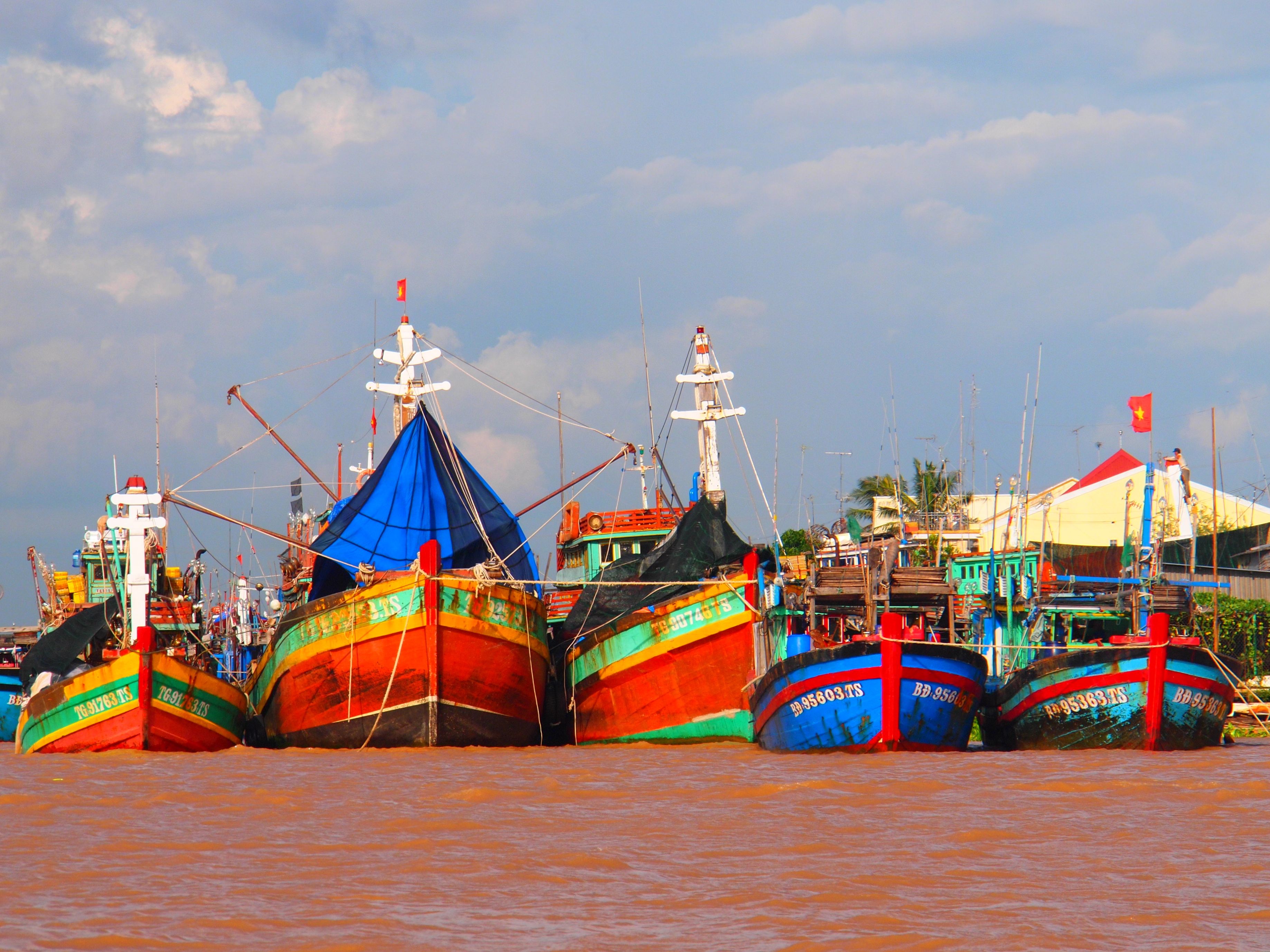
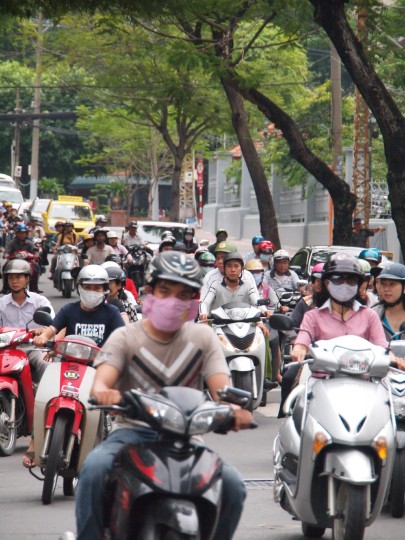
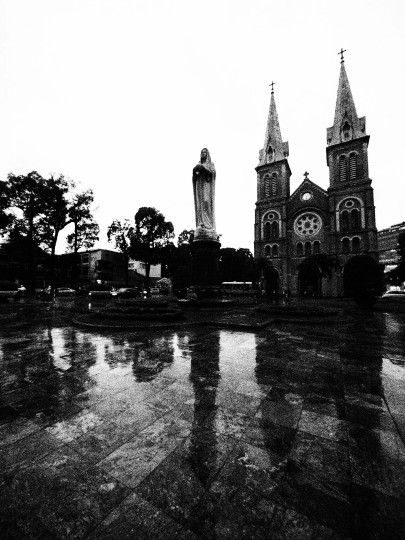
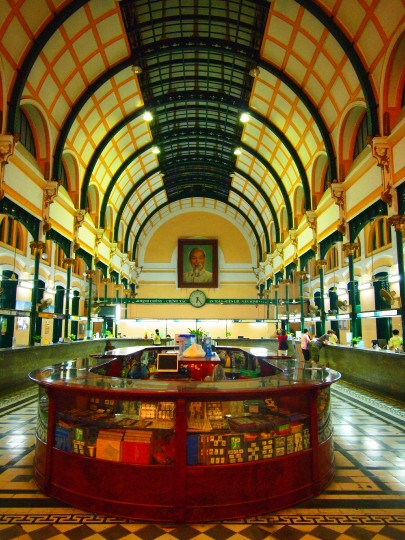
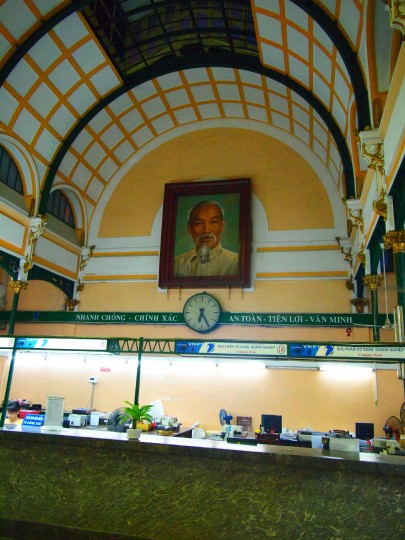
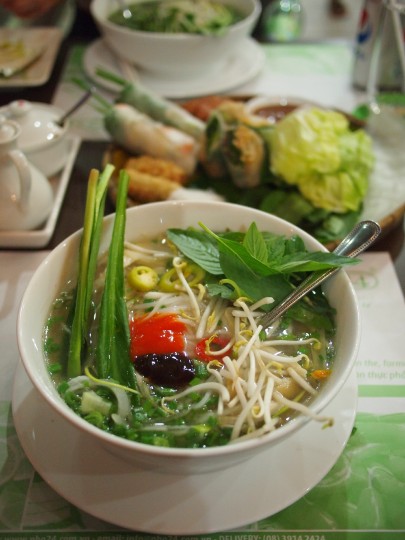
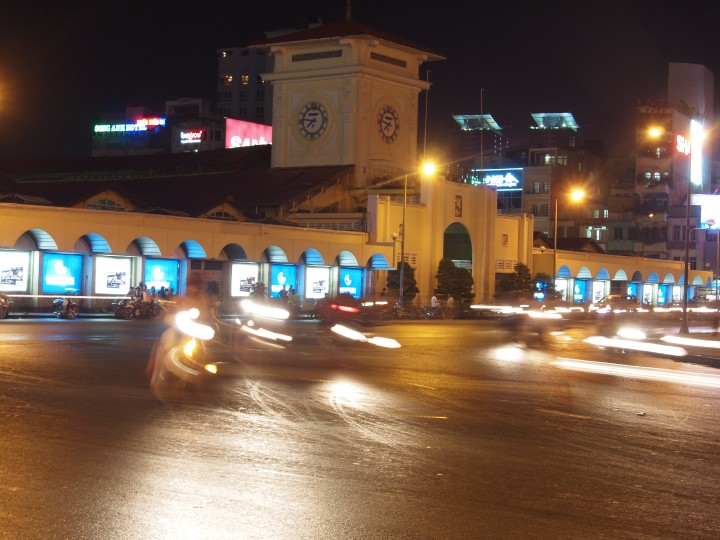
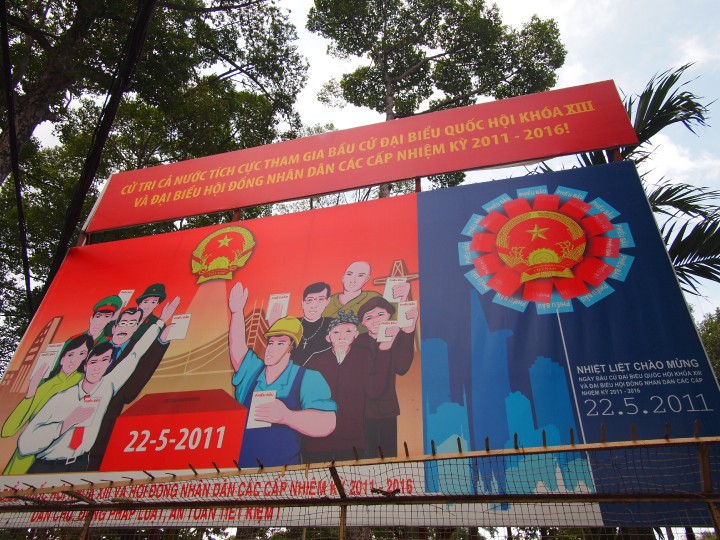
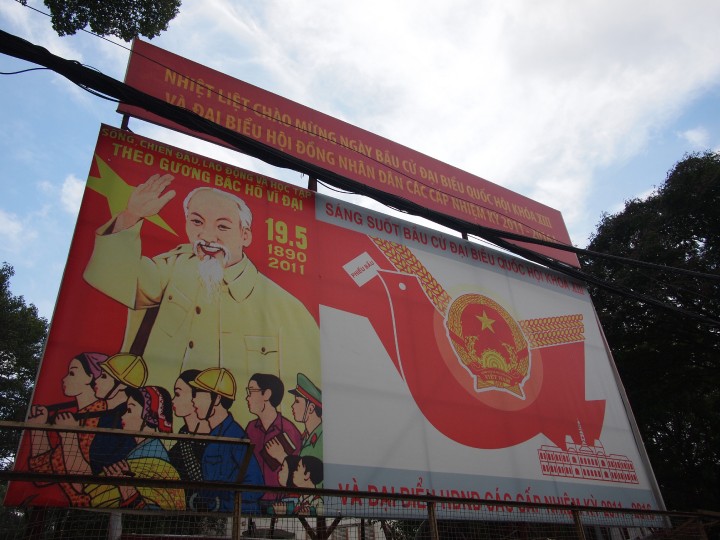
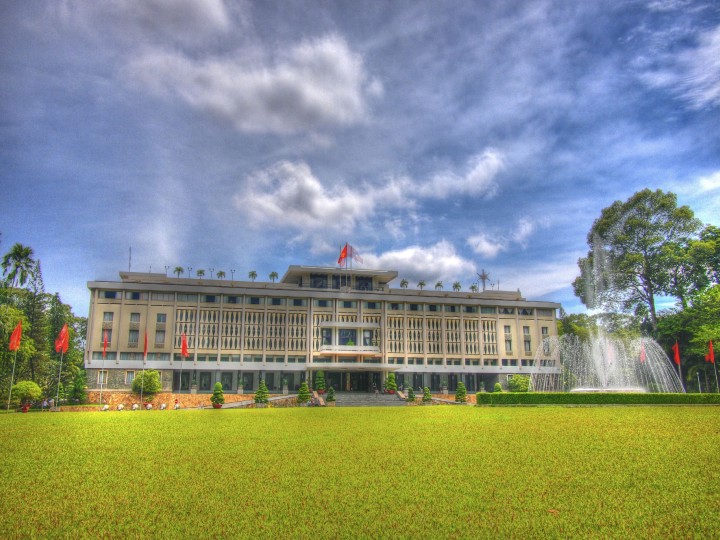
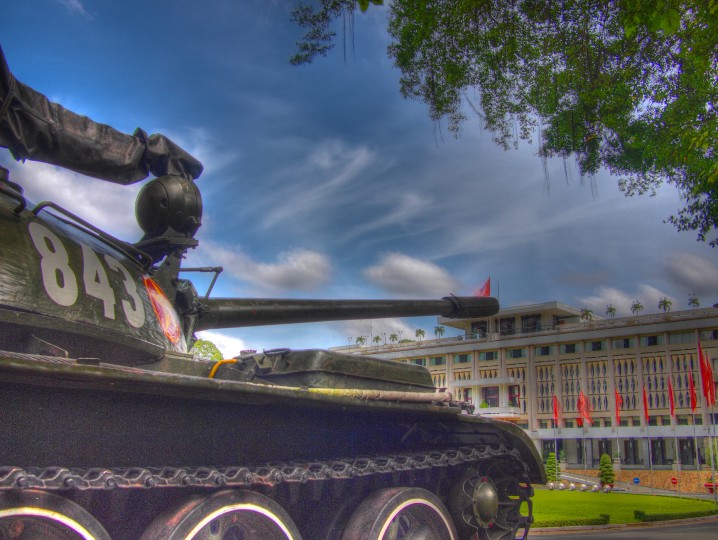
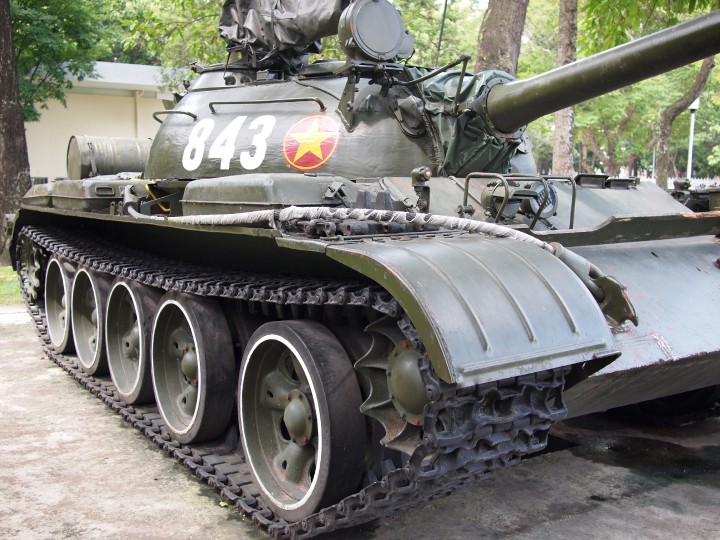
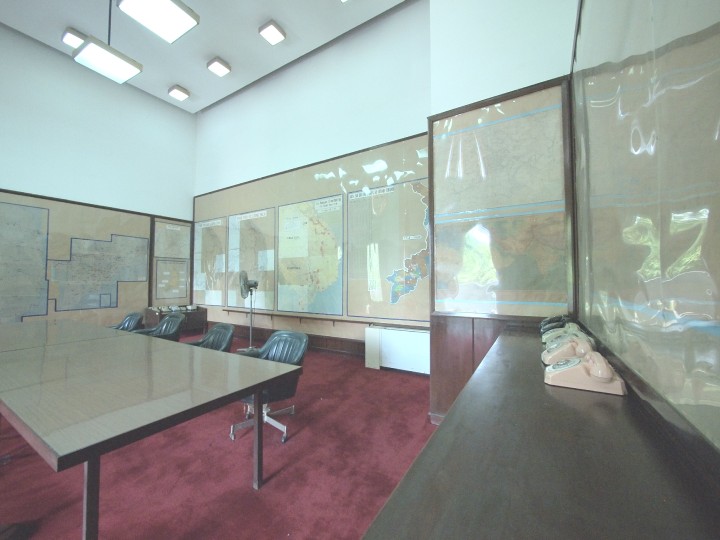
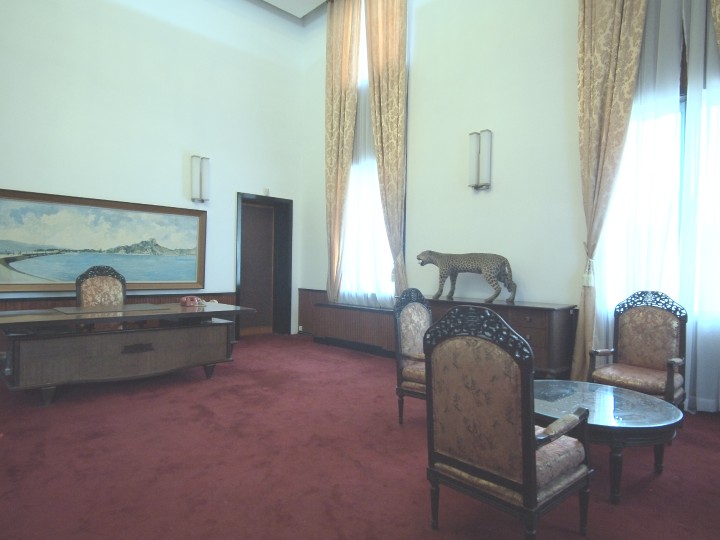
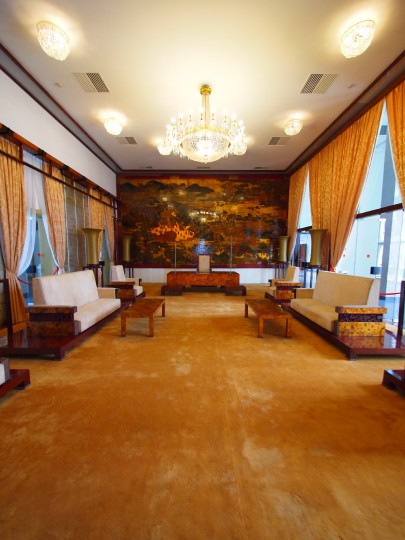
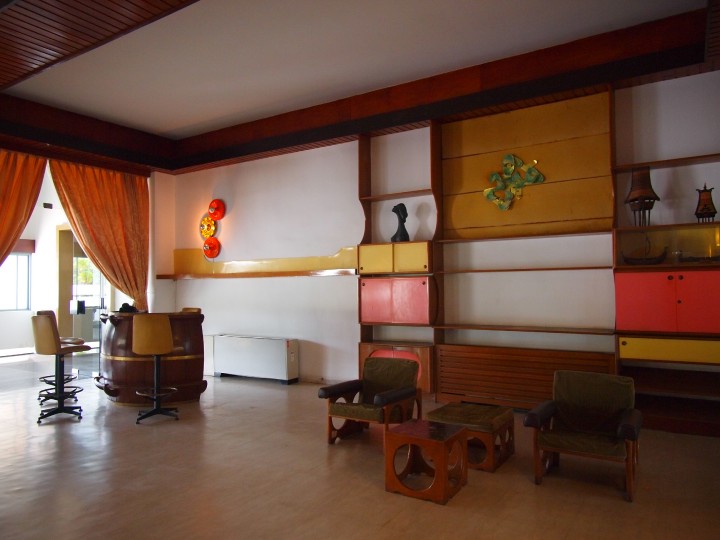
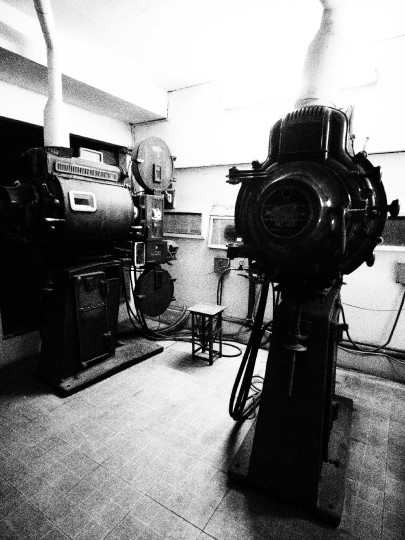
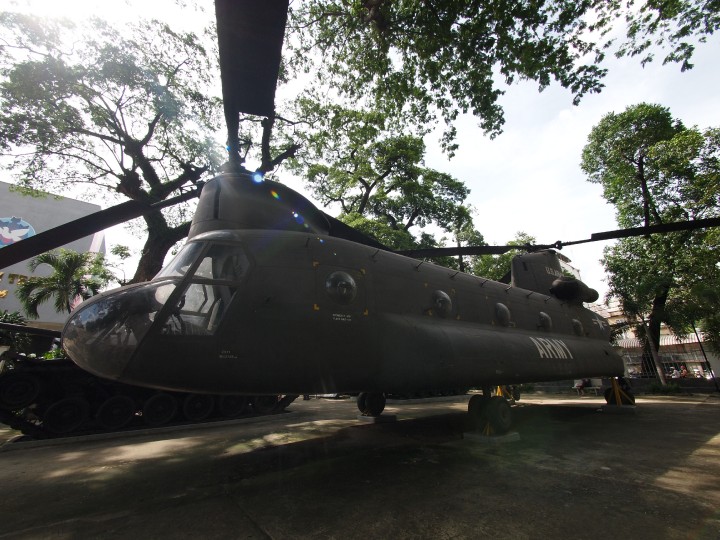
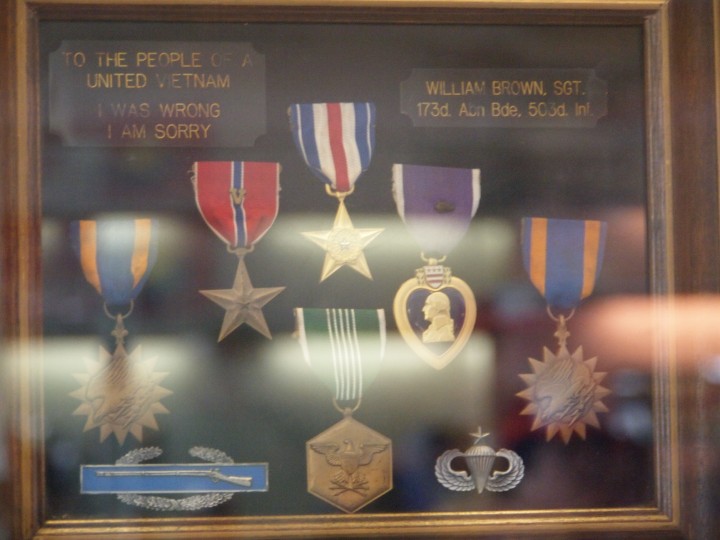
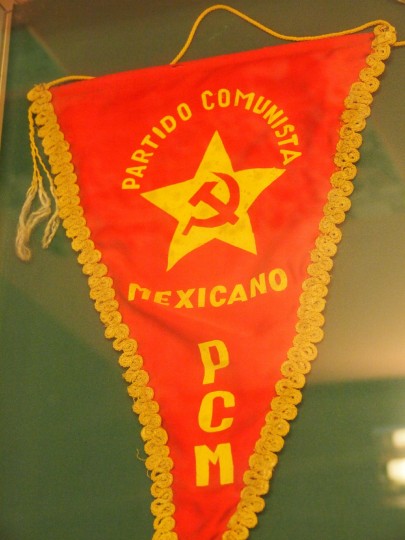
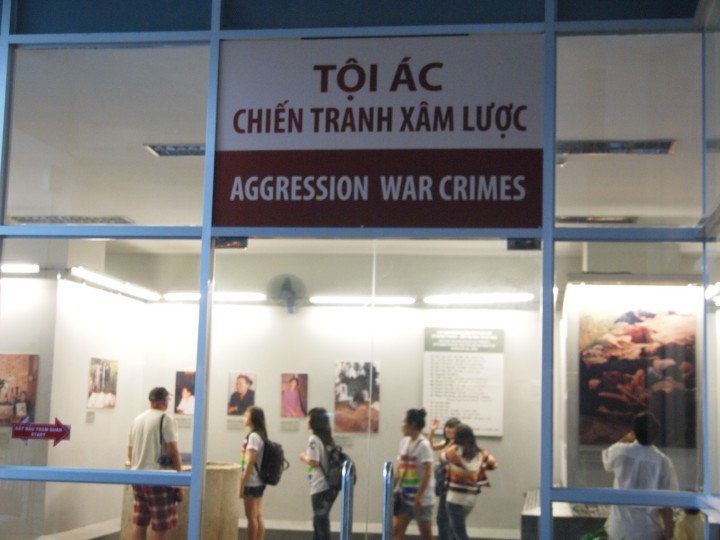
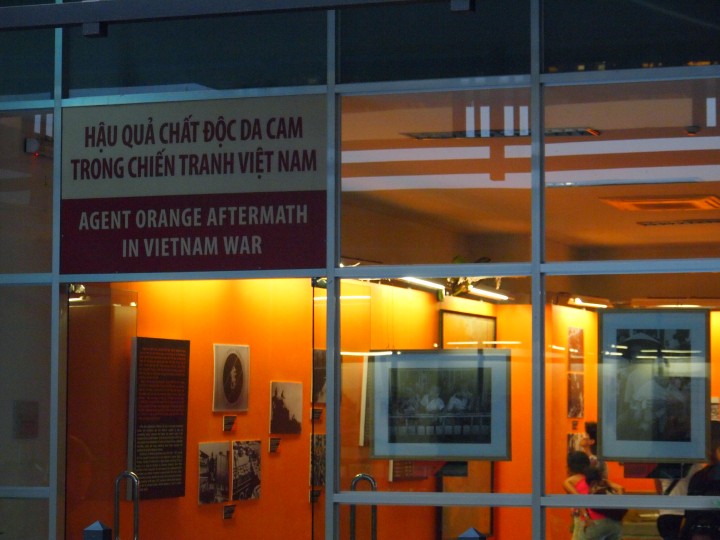
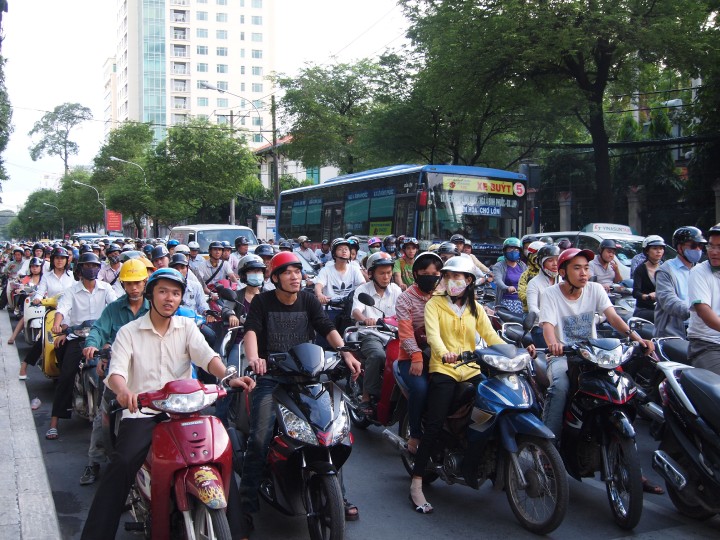
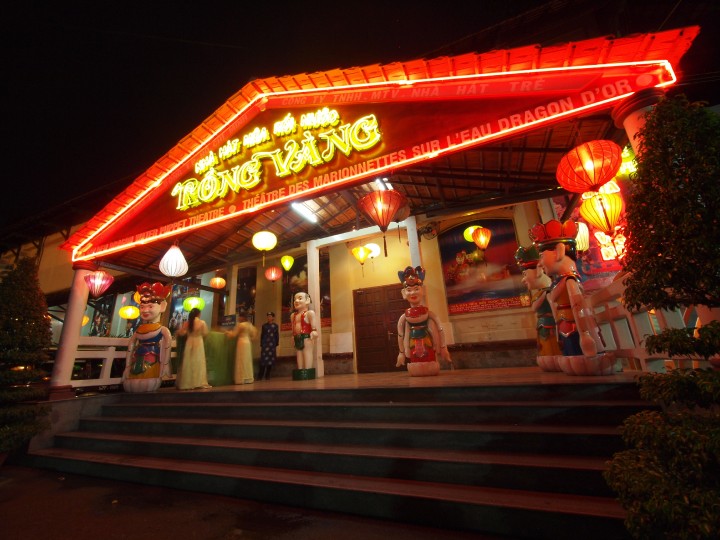
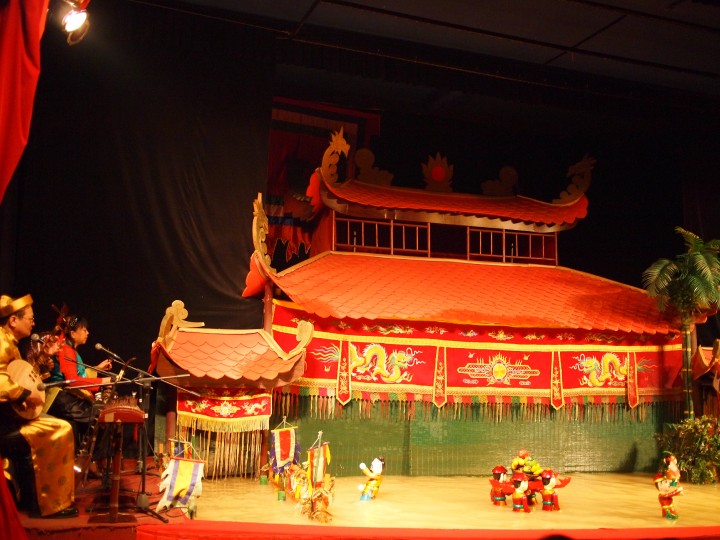
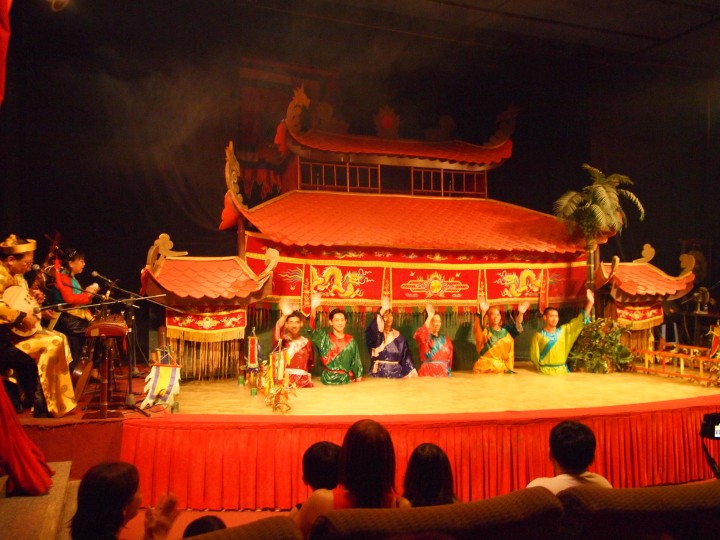
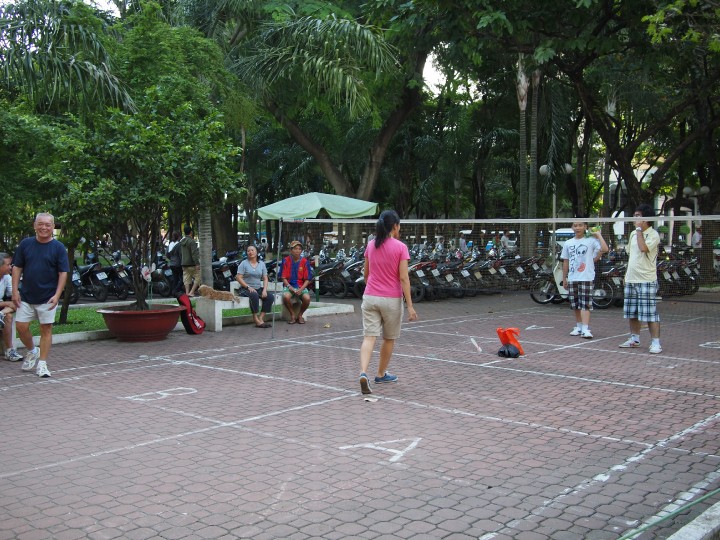
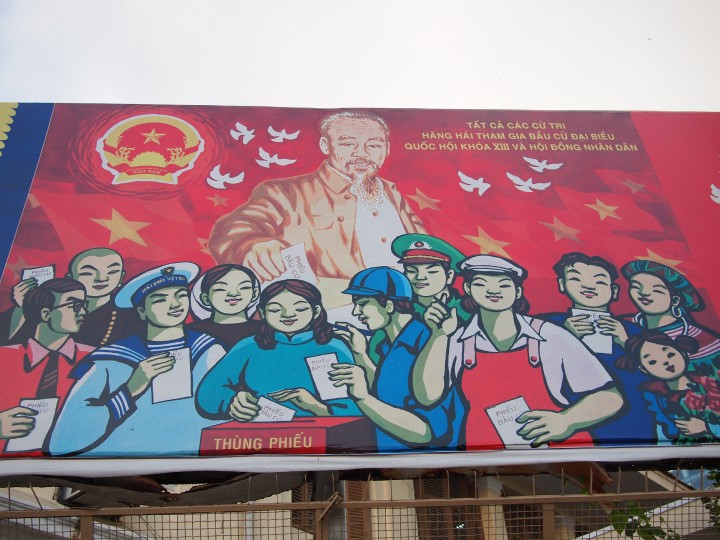
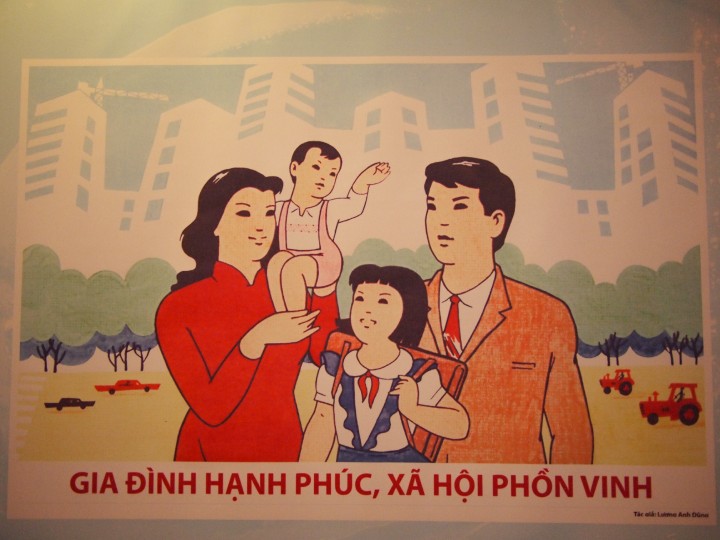
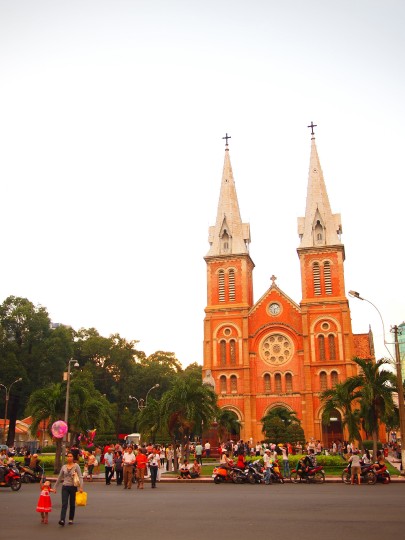
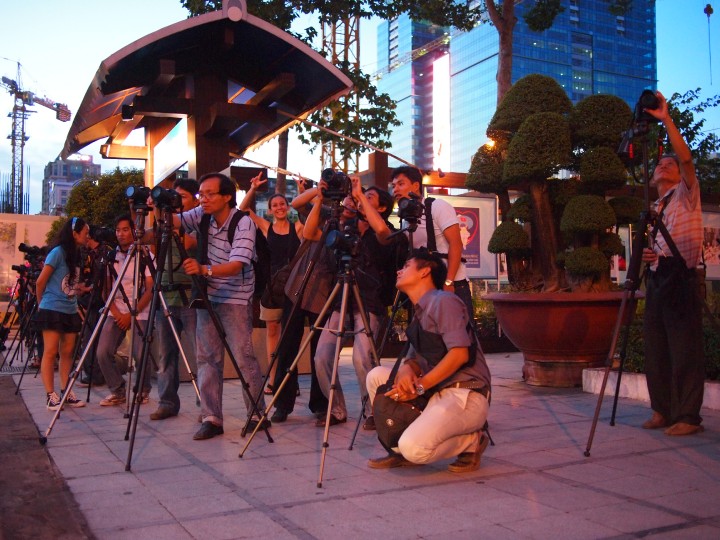
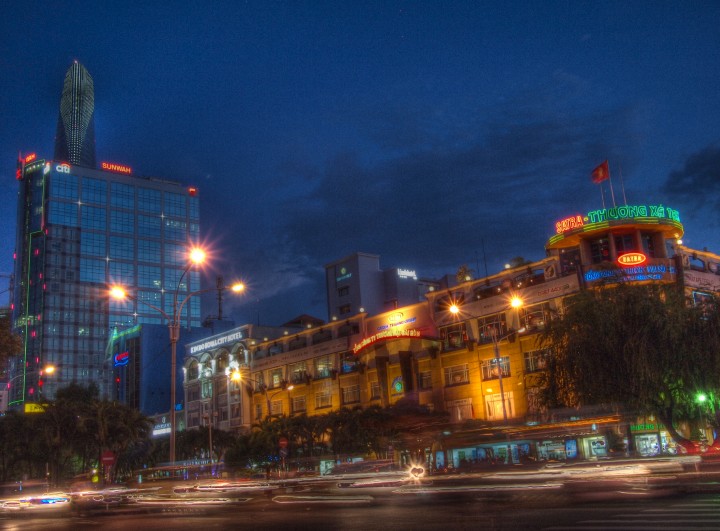
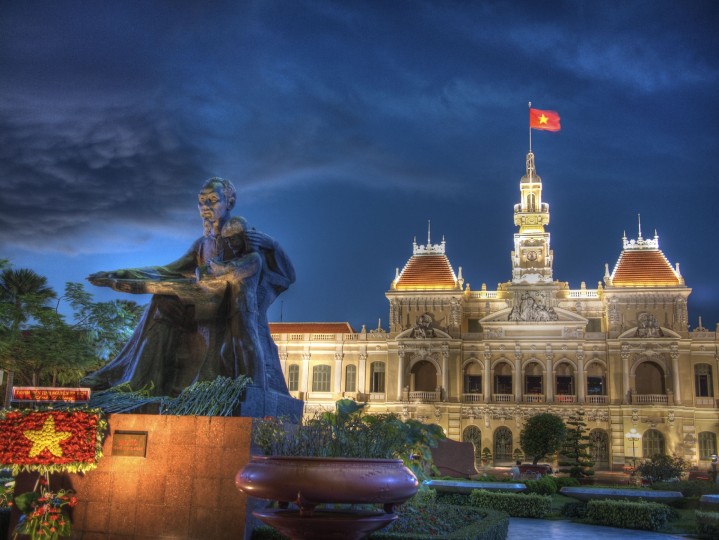
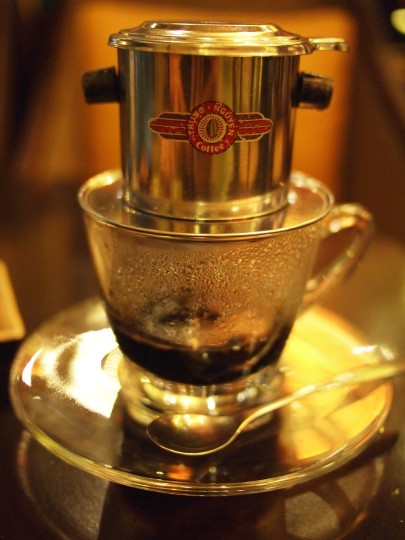

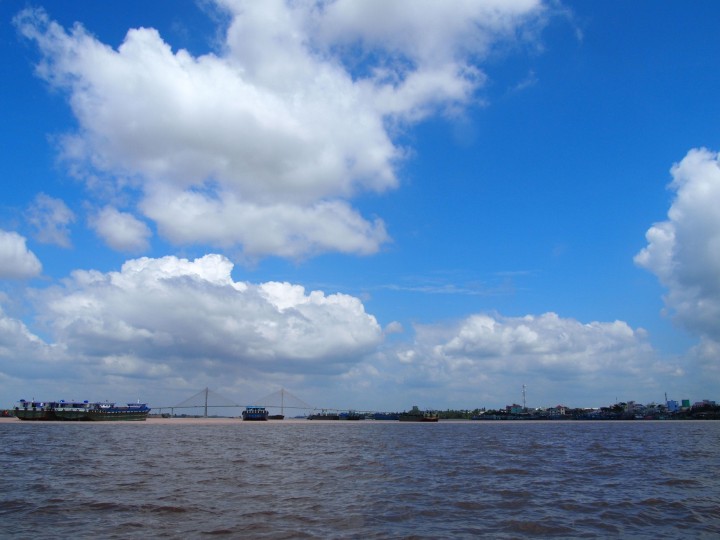
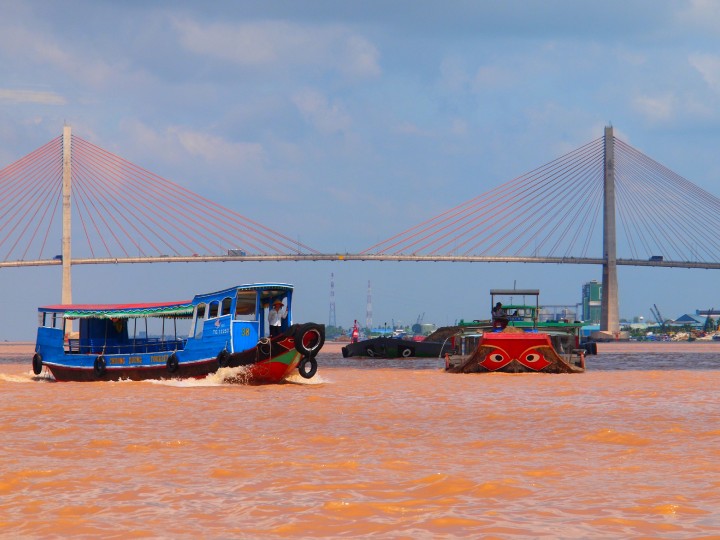
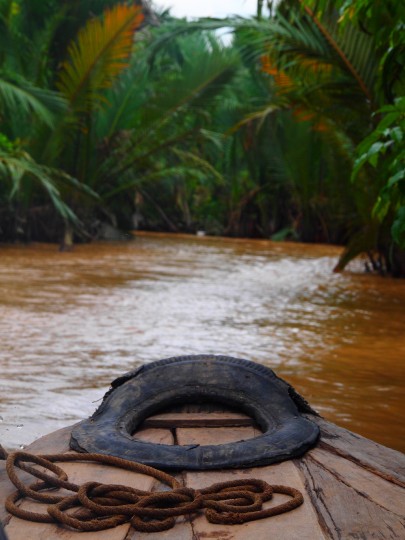
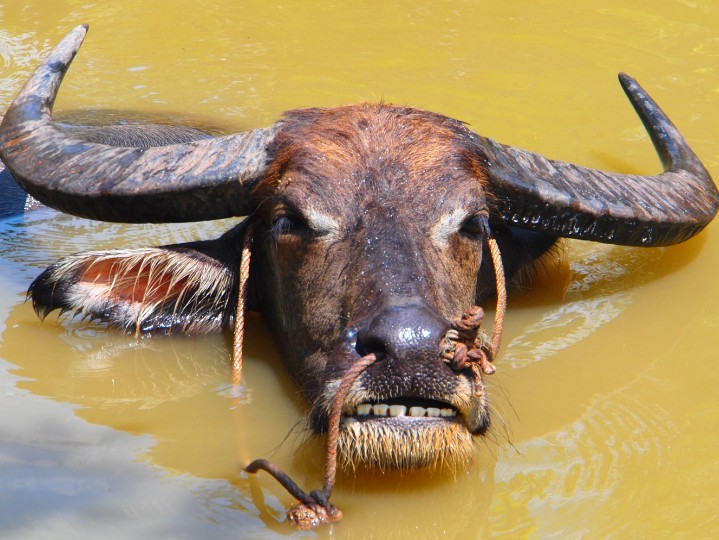
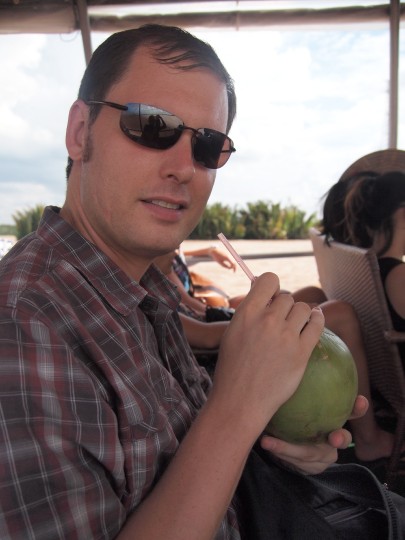
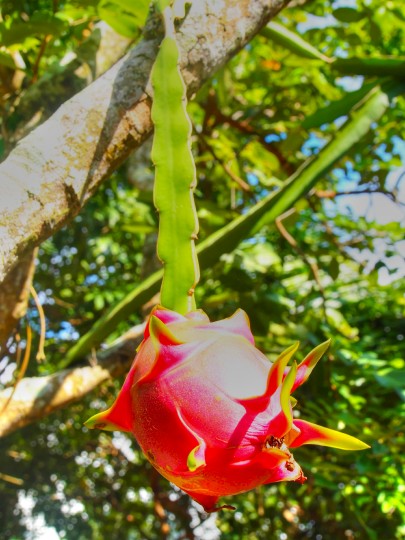
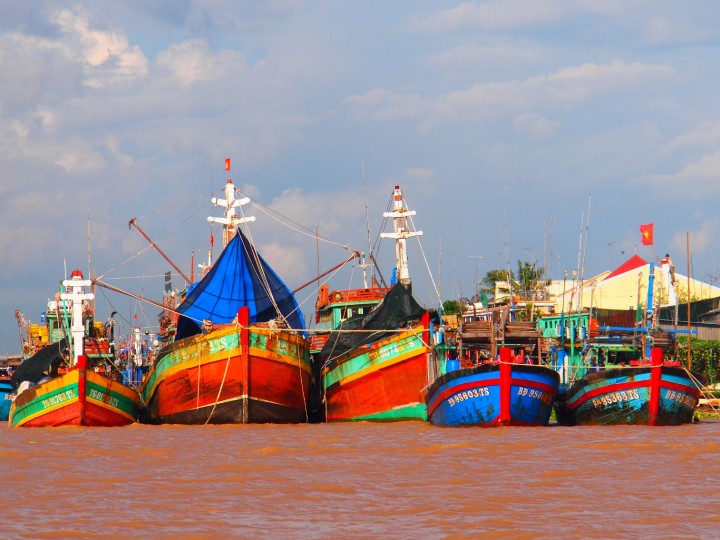
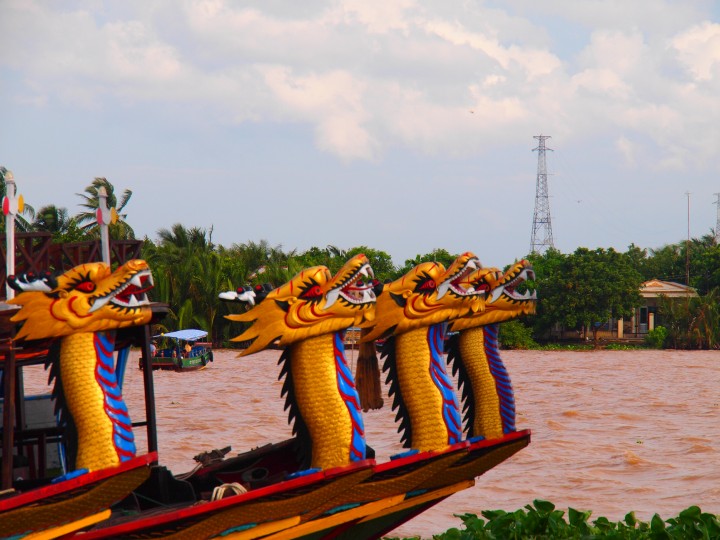
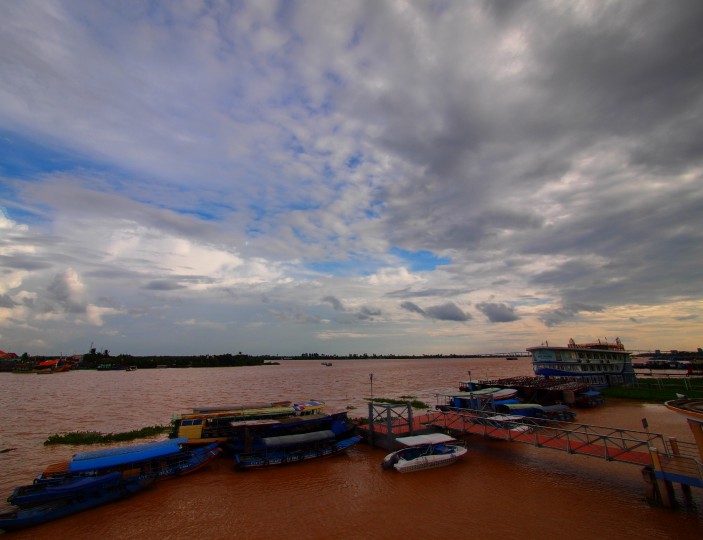
2 thoughts on “Sunset on the Mekong”
Beautiful!
Machine guns and Tigers? Forget Mosh and Jax Zoo, We’re taking the girls to the good sh%t!!!!